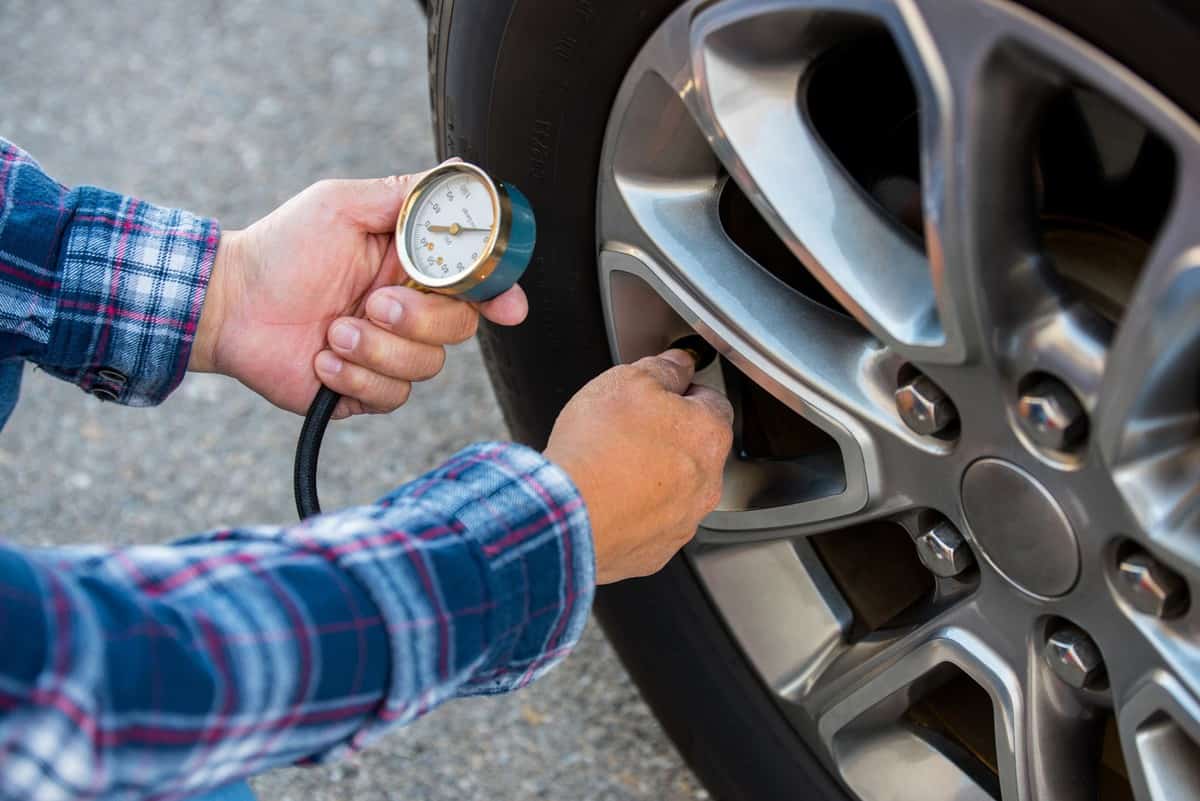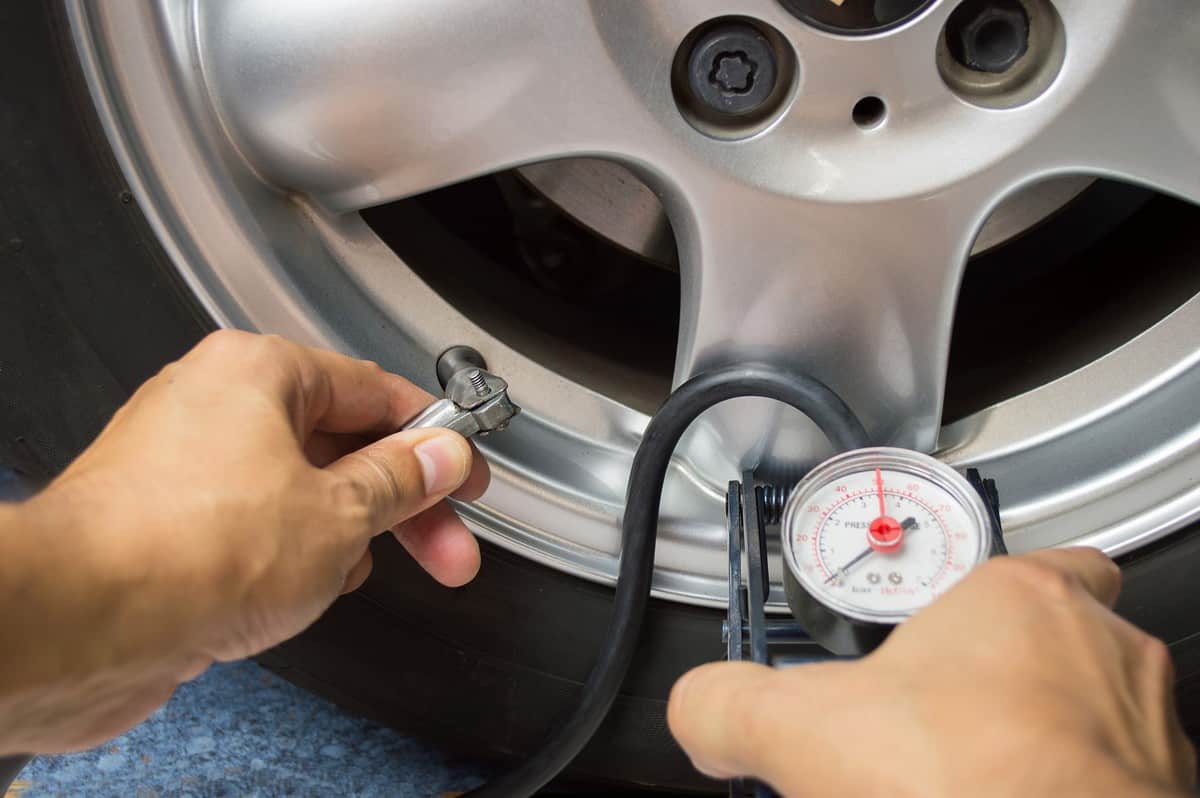Just as with any other car, to enjoy a comfortable and safe ride, your KIA Sorento should maintain the standard recommended tire pressure. What should be this pressure, and how can you keep it at that level? We researched on your behalf to provide the following answers.
The standard tire pressure for a KIA Sorento is 34 psi, and it can be checked in two ways:
- Using the tire pressure monitoring system (TPMS)
- Using the tire pressure gauge
Keep reading to know how to check the tire pressure in a KIA Sorento and the problems that can arise when the pressure is incorrect. Also, learn how to add or reduce the pressure from the tires.
![Kia Sorento Sports Utility Vehicle (SUV) on display at the 2014 Brussels motor show, What Should The Tire Pressure Be On A Kia Sorento? [And How To Check It]](https://vehq.com/wp-content/uploads/2022/03/What-Should-The-Tire-Pressure-Be-On-A-Kia-Sorento-And-How-To-Check-It.png)
How Do You Check The Tire Pressure Of Your KIA Sorento?

You can find the recommended tire pressure (psi), on a sticker on the driver’s door jamb, or in the car manual. This pressure indicates the maximum level that is the most suitable for your type of vehicle.
Using The Tire Pressure Monitoring System
Your KIA Sorento is equipped with a tire pressure monitoring system (TPMS) that automatically checks the pressure in the tires. The tires are fitted with sensors so that the system senses when it needs to provide you with proper tire pressure, which is 34 psi.
Have a look at these tire pressure sensors on Amazon.
When one or more tires are underinflated, the TPMS indicator illuminates on the instrument panel. It will show you the tire(s) with low pressure. In addition, you can access the tire pressure message anytime by pressing the mode button on your steering wheel.
If the indicator comes on when you are driving, you should stop at a safe spot and check the pressure using your digital tire pressure gauge. Or, you can drive to a nearby service station and have the pressure checked.
An added benefit of the TPMS is that it will indicate if a spare tire fitted to your car does not have a TPMS sensor. It can also sense when the temperature outside is lower, subsequently causing the pressure of the tires to go lower.
After the tire pressure has increased so that it is at the recommended level, the TPMS indicator will no longer illuminate, though this could take a few minutes. If the TPMS indicator does not turn off even after adjusting the pressure to the required levels, have it checked by a KIA professional.
Watch this video below and find out how a tire pressure monitoring system works in your KIA Sorento:
Using The Tire Pressure Gauge
You can use a digital tire pressure gauge, a small gadget that is light and easy to carry. Alternatively, drive your car to a service station and use the tire pressure gauge to check the pressure.
This tire pressure gauge is on Amazon.
The best time to check for pressure is when the tire is cold. The friction on the tires as you drive causes the tires to heat up and affect the pressure. Therefore, you have to give it some time to cool down or check the pressure in the morning.
The following are the steps to check the tire pressure using your digital tire pressure gauge or the tire pressure gauge at the service station:
- Take out the cap from the air valve of the tire, and put it in a safe place so that it doesn’t get lost.
- Press the nozzle of the tire pressure gauge onto the open valve stem of the tire and hold it for a second or two. It will produce a hissing noise.
- Read the pressure that appears on the gauge. If you are at a station, the pressure will be indicated by the dial. The point at which it stops is the pressure of the tire.
- Countercheck the reading with the recommended tire pressure.
- Replace the valve cap if the readings match.
- However, don’t replace the valve cap if you need to adjust the pressure.
- If it is lower than the recommended pressure, you will need to inflate the tires and vice versa.
How To Adjust The Pressure Back To The Standard Level

When you check the tire pressure on your tires and it is lower or higher than the standard level, you will need to adjust the pressure back to normal.
How To Inflate Your Tire
If a tire does not have enough pressure, you can inflate it by following these steps below:
- Drive your car to a service station.
- Park as close as possible to the air compressor so that the hose can reach all the tires.
- Remove the cap of the tire with low pressure.
- Press the nozzle of the hose to the valve stem on the tire. The air will flow automatically to the tire. Or you may press the lever to allow the air to move to the tire.
- You will notice the tire inflating.
- Remove the hose, and check the air pressure. It should be as per the car’s manual.
- Repeat step 4 as many times as required until your tire has the correct pressure.
- Repeat step 4 again on the other tires that need to be inflated.
- Secure back the valve caps after ensuring all the tires are inflated.
- Please note, that if air comes out of the hose nozzle as you fill the tire with pressure, check and make sure it is properly connected to the valve stem of your tire.
How To Deflate Your Tire
On the other hand, it can be risky to have your tires inflated more than is needed. Your car can easily skid on the road when the tires are in this condition.
To fix an overinflated tire, follow the steps below:
- Push the metal pin in the center of the valve stem of the tire with the back of the air pressure gauge.
- Release the air in short bursts while checking the pressure after each burst until it reaches the standard pressure.
How Important Is It To Check Pressure In Your Tires?

Checking the tire pressure is important because you can prevent problems that arise due to overinflation or underinflation.
Tire air pressure needs to be checked at least once a month. But, remember to check when the tires are cold. You should have parked your vehicle for a few hours before checking the pressure.
Overinflation
An overinflated tire hardens and stiffens, making it much more difficult to control your car. A tire in this state is at risk of exploding due to the excessively high pressure.
Moreover, your ride will be uncomfortable. A stiff tire transfers the bumps on the road to you and the car occupants. You may not feel this on a smooth road, but more on rough terrain. Even the smallest of bumps will jostle the occupants.
Finally, you will notice more wear and tear on the center treads of the tire than the outside or inside. With time this will cause you to lose grip on the road.
Underinflation
An underinflated tire will have more surface area touching the road. It increases tire friction and causes it to overheat, leading to faster wear and tear.
Too much pressure will be exerted on your car’s suspension and chassis, causing damage to various parts of the vehicle.
A deflated tire will not allow you full control of your car. For example, it will be a challenge to maneuver smoothly at a corner or to bring your car to a stop. Also, you will end up using too much fuel because an underinflated tire will resist rolling.
In Closing

The standard tire pressure for your KIA Sorento is 34 psi. When any of your tires are underinflated or overinflated, the tire pressure monitoring system fitted in your car will automatically alert you. You can also use a tire pressure gauge to check the pressure.
It is vital to check the pressure at least once a month, which should be done when the tire is cold. A hot tire alters the pressure of the tire. You can also prevent problems that come with overinflation or underinflation by ensuring the tires have the required standard pressure level.
Before you go, you might want to check out these related posts:


